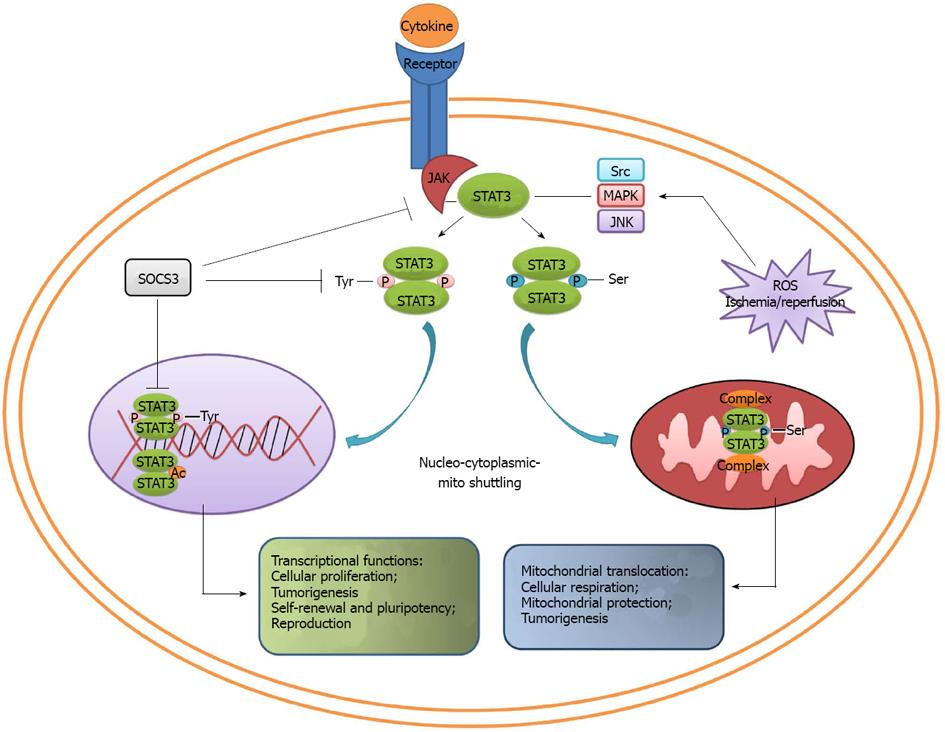Copyright
©2014 Baishideng Publishing Group Inc.
World J Biol Chem. May 26, 2014; 5(2): 231-239
Published online May 26, 2014. doi: 10.4331/wjbc.v5.i2.231
Published online May 26, 2014. doi: 10.4331/wjbc.v5.i2.231
Figure 1 Domain structure of signal transducer and activator of transcription (3α and 3β).
The signal transducer and activator of transcription 3α (STAT3α) protein is composed of N-terminal, coiled-coil, DNA binding, linker, SH2, and transactivation domains. However, the transactivation domain is absent in the alternative splicing variant, STAT3β.
Figure 2 Converging roles of signal transducer and activator of transcription 3.
Different signals can selectively trigger signal transducer and activator of transcription 3 phosphorylation. Tyr-phosphorylated STAT3 translocates into the nucleus and regulates gene expression, thus playing an important role in cell proliferation, tumorigenesis, self-renewal and pluripotency. On the other hand, Ser-phosphorylated STAT3 translocates into mitochondria, binds with the complexes in respiratory chain, and ultimately maintains the cellular respiration and mitochondrial protection. MAPK: Mitogen-activated protein kinase; ROS: Reactive oxygen species; JNK: c-Jun N-terminal kinase; JAK: Janus kinase.
- Citation: Qi QR, Yang ZM. Regulation and function of signal transducer and activator of transcription 3. World J Biol Chem 2014; 5(2): 231-239
- URL: https://www.wjgnet.com/1949-8454/full/v5/i2/231.htm
- DOI: https://dx.doi.org/10.4331/wjbc.v5.i2.231














